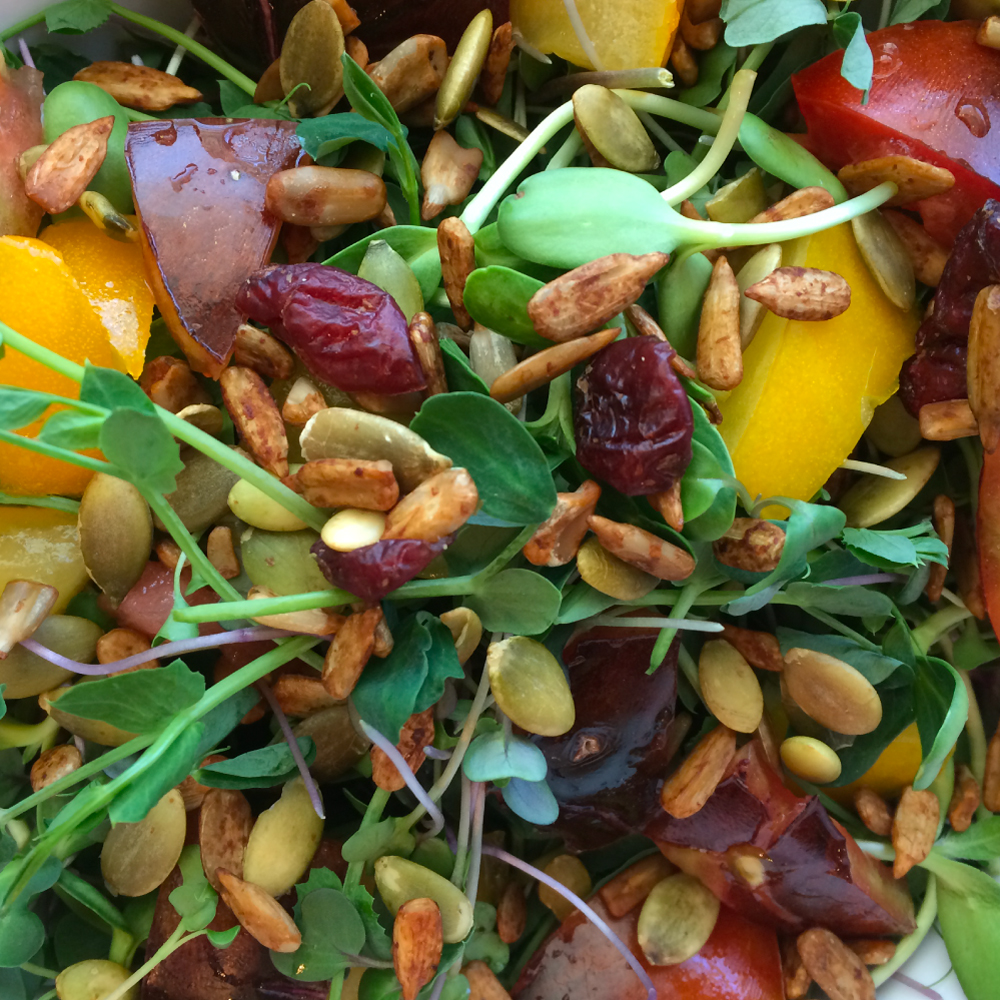It’s so easy to forget to eat seasonally these days with all the simple to fix processed food, fast food restaurants and the blurred lines of the global food chains.
Food is grown round the world, picked green, shipped internationally, ripened with ethylene and plopped onto the shelves as “fresh produce” marketed with images of local small farms and hard working smiling farmers.
As they say, there are no seasons in the modern day grocery store.
So how do we begin to take back a portion of our physical health? We start by truly eating locally and seasonally. Here are a few suggestions and benefits.
Eating Locally
We have a local farm stand in our community that does indeed grow some of their own produce and brings in additional produce they can neither grow themselves nor keep up with the demand. It’s marketed as “local”, but upon further inquiry is often brought in from other parts of the state or from a neighboring state.
Now I’m not going to fault him for it, because it would be truly impossible to grow everything you find or want at a local farm stand. The benefits of your local produce stand are that it’s seasonal and local as you can possibly get it.
And while it may have traveled from across the state, it hasn’t come half way around the world, was picked green and ripened artificially.
So when possible, start your seasonal eating habits by supporting your local grower, farm stand or farmers market.
Better Flavor & More Nutritious
“Fresh Produce” that has traveled across the globe is more produced than it is grown. Even if your local grower is growing in a mono-culture environment, (growing a single crop that season or rotation), she is more likely to be a stewardess of the land, water and soil than something that is “produced” in another hemisphere.
Produce picked before it’s truly ripe, lacks the essential nutrients and minerals the sun and soil can give it as opposed to those that are truly vine ripened fruit.
Seasonal foods eaten closer to when it’s harvested are fresher, taste better and full of the complete nutrient complexity it was created to produce. The shorter the miles traveled and the less it’s handled the better more nutrient dense it will be for the body.
A first grader can tell you a seasonal garden tomato taste better than something from the store in the same season.
Cheaper
As it’s said, there are no seasons in the modern day grocery store. About the only seasonal reflection you do see are in the prices. A winter off-season Red Bell Pepper can cost you $3.49 each, (2020 prices), whereas the same Pepper grown in the summer costs you only $1.49 each. A pack of pepper seeds would cost you that much.
Supports Your Body’s Natural Nutritional Needs
I’ll leave this one to the experts; note the following excerpt from Dr. Karen Wallace’s blog;
Eating Seasonally Supports Our Health-Promoting Microbiome:
What is your microbiome you ask? It is the abundance of good bacteria that resides in our digestive system (and all over actually) that help your overall health including immune health, digestive health, skin health, blood sugar balance, weight management and so much more! Our gut bacteria is ever changing for the good and eating seasonally contributes to this. Fall foods contain things like resistant starch (in foods such as onions, leeks, garlic) which feed the good bacteria, as well as polyphenols providing antioxidant support. A highly processed diet with sugar, unhealthy fats and carbs can negatively shift the microbiome within 24 hours! Luckily we can remain calm in knowing it can shift back within that time frame by eating a plant-rich healthy diet. So you can forgive yourself for indulging over the weekend. One idea is that in the fall we want to limit fruit that we indulged in in the summer as too much fructose-rich fruit and a more sedentary life may cause a yeast overgrowth leading to feeling bloated, moody and with skin changes.
Eating seasonally also encourages more variety in color, texture, fiber, vitamins, minerals and nutrients over the course of a year. Seasonal variety is good for your gut!
Grow It Yourself
What better way to connect with eating seasonally than is to grow it yourself? Just like your local farm stand, you won’t be able to grow it all, but what you do grow has all the benefits of locality, cheaper, better tasting, more nutrient and mineral dense, organic, including a little homesteading food independence for you and your family.
Speaking of which, if you have kids at home, get them involved. They are more likely to eat what they’ve had a hand in growing than not. There is nothing more pleasurable than watching your kids harvest some peas, a carrot or a tomato and eat it right there in the garden.
No matter where you live and what climate you experience, you can grow food year round. Plants are genetically predisposed to grow better at certain times of the year and with a little help from season extenders like low or high tunnels, cold frames and cloches, growing in the “shoulder seasons” or “off season” is not only doable, but can be far easier without the added pests and disease pressures.
All the seasonal eating and gardening best,
Darren
